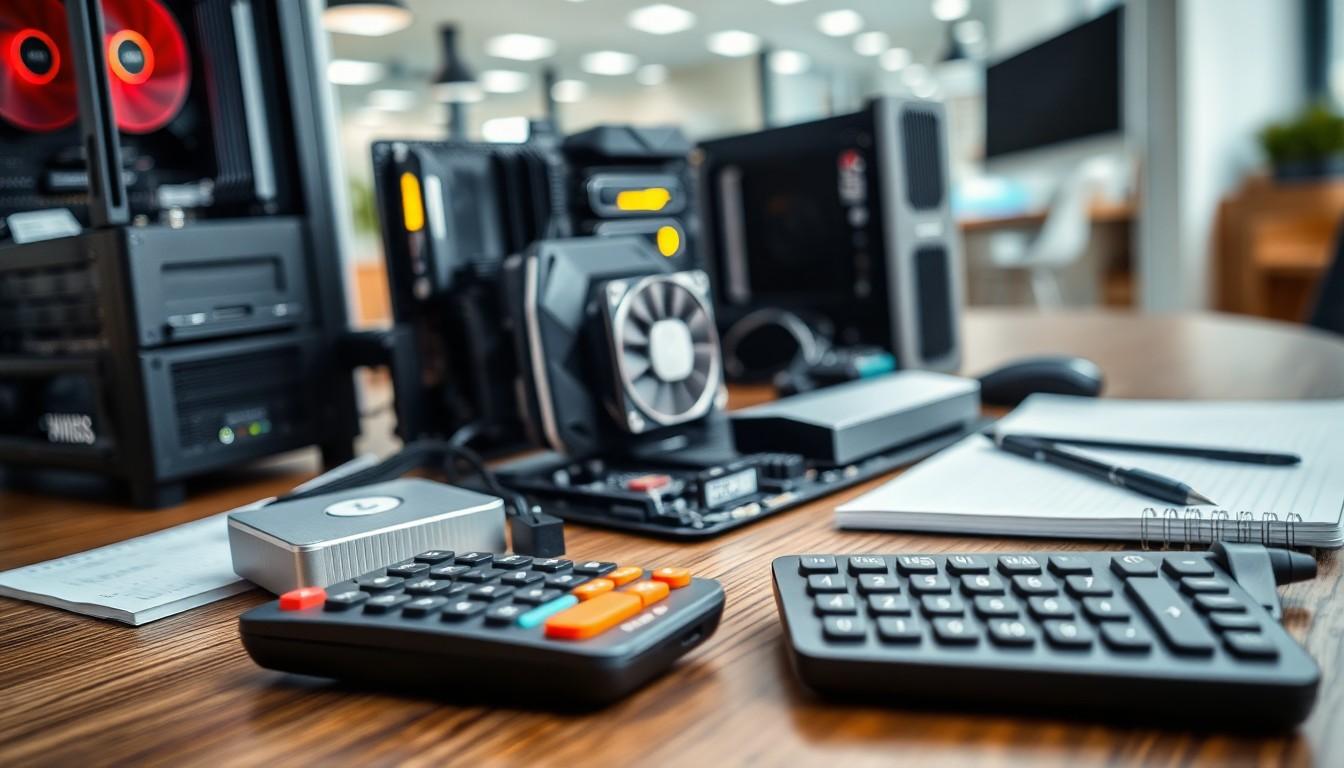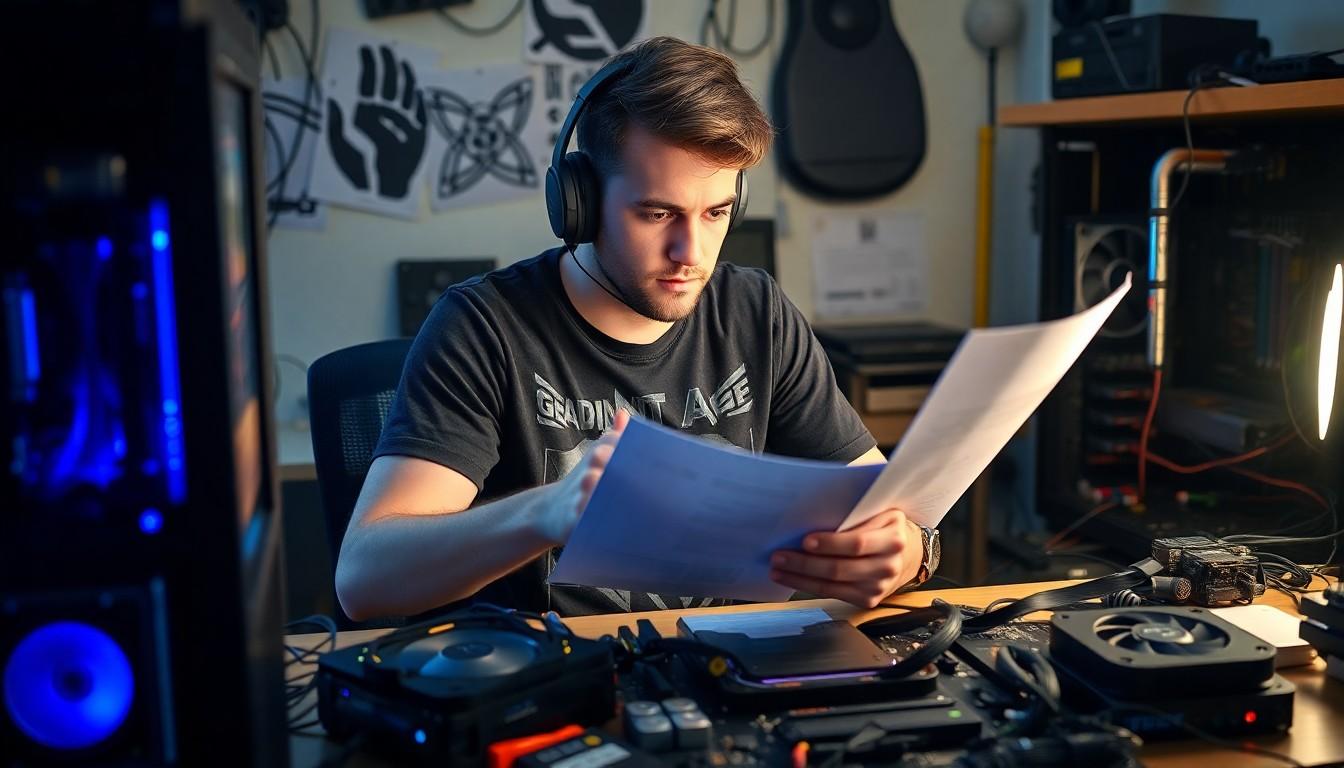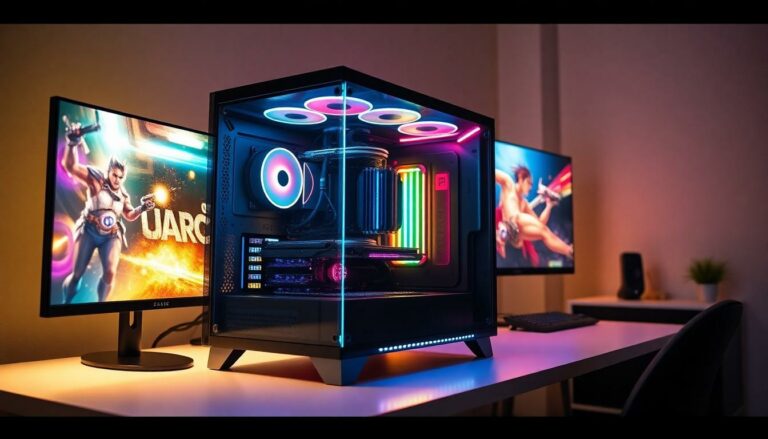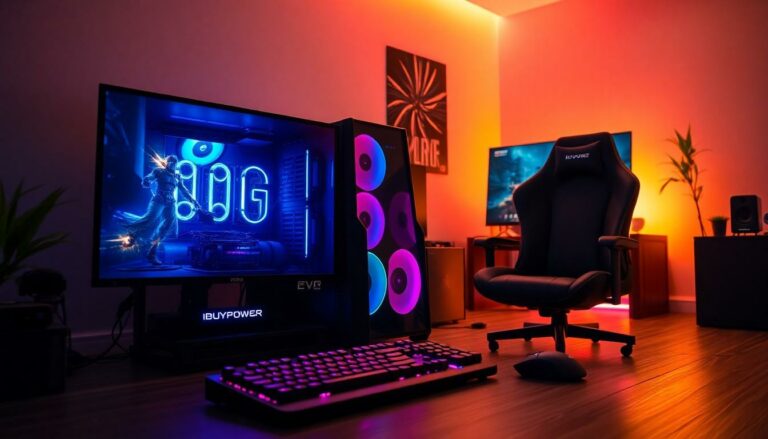Building a gaming PC isn’t just a hobby; it’s a rite of passage for every gamer. Imagine crafting the ultimate machine that can handle the latest titles while making your friends green with envy. It’s like assembling a superhero—each part plays a crucial role in saving your gaming experience from the clutches of lag and low frame rates.
Gaming PC Build
Building a gaming PC requires careful selection of essential components. Each part plays a critical role in achieving optimal gaming performance.
Central Processing Unit (CPU)
The CPU serves as the brain of the gaming PC. It processes instructions and calculations, directly influencing game performance. Selecting a high-performance CPU, such as those from Intel or AMD, enhances gaming experiences. Consider multi-core processors for improved multitasking when gaming or streaming. For best results, aim for CPUs with higher clock speeds, as they ensure faster data processing.
Graphics Processing Unit (GPU)
The GPU handles rendering graphics, making it vital for any gaming setup. A powerful GPU, like the NVIDIA GeForce RTX or AMD Radeon series, enables smooth gameplay at high resolutions. Prioritize GPUs with sufficient VRAM for detailed textures and higher frame rates. Investing in a robust GPU directly impacts visual fidelity and overall gaming satisfaction. Check for compatibility with other components to avoid performance bottlenecks.
Motherboard
The motherboard connects all components, acting as the backbone of the build. When selecting a motherboard, ensure compatibility with the CPU and GPU. Features such as PCIe slots for expansion cards and USB ports for peripherals enhance usability. Consider the form factor, as it determines the case size and layout. Quality motherboards from brands like ASUS or MSI offer durability and essential features for a gaming rig.
Selecting The Right Parts for Your Gaming PC Build
Choosing the right components for a gaming PC involves careful consideration of both budget and performance needs.
Budget Considerations
Establishing a budget serves as the foundation for any gaming PC build. Aim for a well-balanced allocation across all components, including CPU, GPU, motherboard, and storage. Analyze your priorities. High-end components command higher prices but directly impact gaming performance. Utilize online price comparison tools to identify the best deals. Keeping a reserve for peripheral equipment, such as monitors and keyboards, is essential. Factor in future upgrades too. A prudent approach often involves selecting mid-range components that meet most gaming requirements while providing room for enhancements later.
Performance Requirements
Defining performance needs is crucial before selecting components. Identify the games to be played to gauge requirements accurately. Some games demand substantial CPU power for optimal performance, while others benefit more from robust GPUs. Determine the desired gaming resolution. Higher resolutions necessitate more powerful GPUs to ensure a smooth experience. Consider multitasking scenarios as well. If streaming or recording gameplay is also planned, prioritize CPUs with multiple cores and higher clock speeds. Ultimately, setting clear performance parameters streamlines the decision-making process for selecting parts that meet specific gaming demands.
Assembly Process of a Gaming PC Build
Assembling a gaming PC involves several important steps that require attention to detail. Following a systematic approach ensures compatibility and optimal performance.
Step-by-Step Guide
-
- Gather all necessary components, including the CPU, GPU, motherboard, RAM, storage, and power supply.
- Prepare the case by removing side panels and ensuring enough workspace.
- Install the CPU into the motherboard first, aligning it with the socket without touching the pins.
- Attach the RAM modules into the designated slots, ensuring they click into place.
- Secure the motherboard inside the case, using standoffs for proper spacing.
- Install the GPU into the PCIe slot, ensuring a firm connection.
- Connect the power supply to the motherboard and all components, including the GPU and storage.
- Attach storage devices, either SSDs or HDDs, to their respective bays and connect cables.
- Close the case and connect peripherals like keyboard, mouse, and monitor.
- Power on the system, enter BIOS, and check component functionality.
Common Mistakes to Avoid
Avoid overlooking compatibility between parts. Ensuring the motherboard supports the selected CPU and GPU is essential. Neglecting the thermal paste during CPU installation can lead to overheating issues. Incorrectly seating RAM can cause boot failures, so confirming connections is crucial. Skipping cable management results in airflow problems. Failing to ground oneself before touching components may lead to static damage. Forgetting to check BIOS settings before installing the operating system can prolong setup time. Prioritizing quality over quantity ensures a more reliable build, leading to a greater gaming experience.
Testing and Optimizing Your Gaming PC Build
Evaluating and enhancing a gaming PC requires thorough testing and adjustments. Understanding performance metrics ensures the system operates at its best.
Performance Testing
Performance testing involves using benchmark software like 3DMark or FPS monitoring tools. These applications assess frame rates, graphical fidelity, and overall system performance. Monitoring temperatures during testing prevents overheating and ensures component longevity. In-game testing of benchmark titles provides practical insights into the gaming experience. Aiming for consistent frame rates above 60 FPS assures smooth gameplay, especially in fast-paced titles. Identifying bottlenecks in the CPU or GPU can help in making informed upgrades.
Software Tweaks
Software tweaks play a significant role in optimizing performance. Adjusting in-game settings, like resolution and graphics quality, can lead to smoother gameplay. Utilizing tools such as MSI Afterburner allows for fine-tuning GPU clock speeds and fan settings. Optimizing startup programs frees up system resources, ensuring faster load times. Updating drivers for the GPU enhances compatibility and performance with the latest games. Regularly running system maintenance, like disk cleanup, keeps the PC running efficiently and free of unnecessary clutter.
Possibilities and Personal Satisfaction
Building a gaming PC is an empowering journey that transforms a collection of components into a high-performance machine. This process not only enhances gaming experiences but also fosters a deep sense of accomplishment. By carefully selecting each part and following the assembly steps, gamers can create a rig tailored to their unique needs.
Testing and optimizing the build ensures the system runs smoothly while keeping temperatures in check. With the right approach and attention to detail, anyone can craft a powerful gaming setup that stands the test of time. Embracing this challenge opens up a world of gaming possibilities and personal satisfaction.





